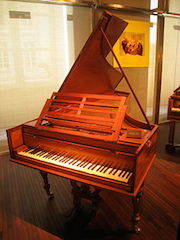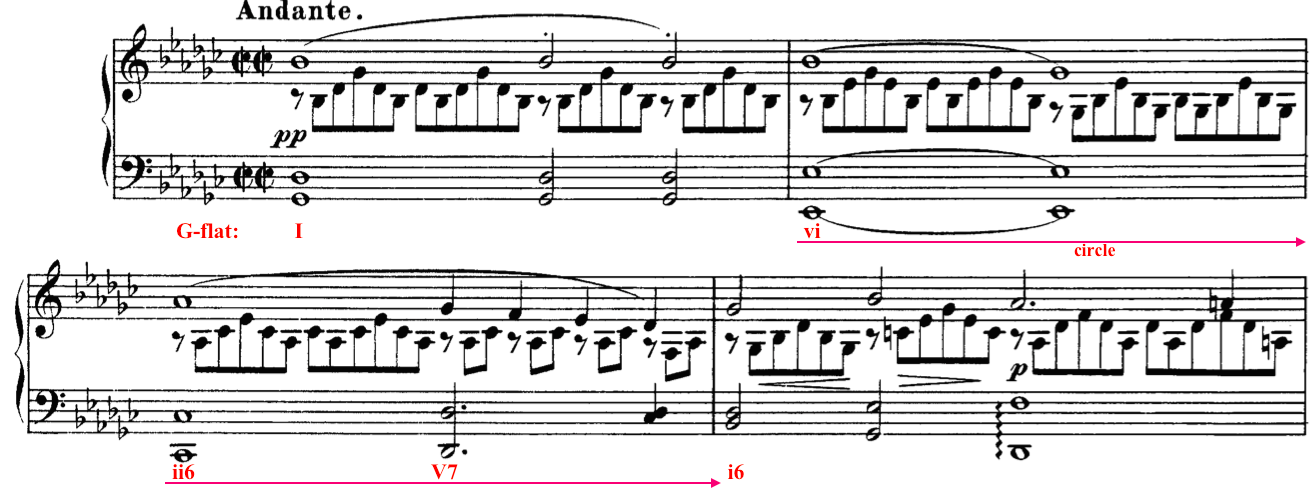
HARMONIC EXPANSIONS
CHAPTER 4: INSERTING PRE-DOMINANTS AND THE CIRCLE PROGRESSION
4.6 vi and the circle progression, vi ii V I
 |
 |
 |
 This sonata would have been played on a fortepiano (above), smaller than a piano and without the dynamic range. |
In the first movement of Haydn's piano sonata No. 48 in C Major, Hob. XVI:35 (m. 12 - 16), the familiar ii6 - V7 - I progression is preceded with a vi triad. On page 4.2 chords whose roots moved by descending fifth, like ii - V and V - I, were said to have a sense of "direction" or "movement." So, just as ii is called a pre-dominant, it would not be stretch to call vi a "pre- pre-dominant." Instead of the cumbersome labeling, though, these web pages will identify circle progressions with an arrow going left to right. As explained in the introduction to this chapter, the root movement vi ii V I is called a circle progression since the letters of the roots are in the same order as the letters of keys in the circle of fifths.
|
The four part examples to the left with root movement I - vi - ii - V - I differ from each other in just one note, the third note in the bass. In Phrase 1 this bass note is the root of ii, while in Phrase 2 this note is the third of ii, thereby inverting the triad. Play the phrases. As a result of the change in this single note the second bass line is smoother and the sound of the phrase as a whole is more satisfying.
The smoothest voice leading in phrases like Phrase 1--with root position chords which have at least one note in common--is Common Tone Stepwise. However to highlight the change in the bass line, voice leading between ii and V in Phrase 1 was written to match that of Phrase 2. Recall from the previous page that CTS cannot be used between ii6 and V because it would result in parallel octaves (and an augmented second if the phrase had been in minor). |
|
The chord of the submediant can be used in the same way in minor as it is in major. See the video to the right.
Again the two phrases differ from each other by only one note, but this time the note is in the tenor of the third chord. Whether this note is C or D determines whether the chord is iv or ii°6. Though the progression with iv is not, strictly speaking, a circle progression, iv and ii°6 do sound very similar. See if you can tell the difference between them by ear. |
An example of the circle progression in Baroque music appears in the first movement of
Spring, from Vivaldi's The Four Seasons:
An example of the circle progression in Romantic music appears at the beginning of Schubert's "Impromptu" Op.90, No.3:
Examples of the circle progression in popular music appear in the introduction to this chapter.
An example of the circle progression in Romantic music appears at the beginning of Schubert's "Impromptu" Op.90, No.3:

|
Examples of the circle progression in popular music appear in the introduction to this chapter.
 |
 |
 |
 |
Comments? Click here. |



